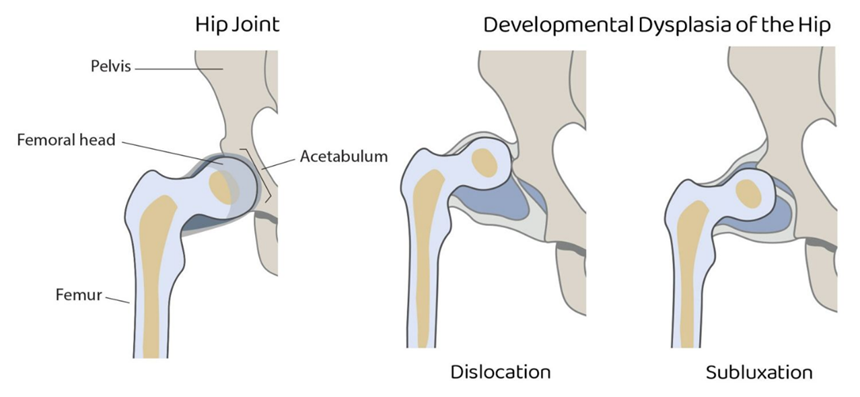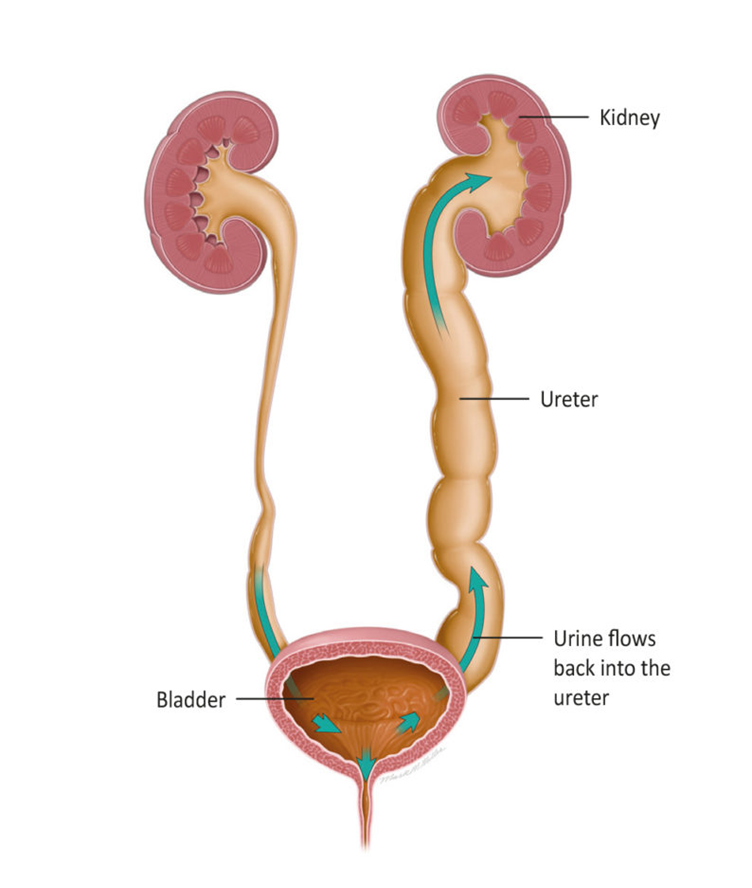The nurse is caring for an infant with developmental dysplasia of the hip. Which clinical manifestations would the nurse expect to observe? (Select all that apply.)
Positive Ortolani click
Unequal gluteal folds
Trendelenburg sign
Negative Babinski sign
Telescoping of the affected limb
Correct Answer : A,B,C,E
The correct answer is a) Positive Ortolani click, b) Unequal gluteal folds, c) Trendelenburg sign, and e) Telescoping of the affected limb.
Choice A reason:
A positive Ortolani click is a clinical manifestation of developmental dysplasia of the hip (DDH). The Ortolani maneuver is used to detect hip dislocation or subluxation in infants. When the hip is abducted and gentle pressure is applied to the proximal thigh from behind, a palpable “clunk” is noticed as the femoral head relocates into the acetabulum. This indicates hip instability, which is a characteristic of DDH.

Choice B reason:
Unequal gluteal folds are another clinical manifestation of DDH. Asymmetrical gluteal creases can suggest hip dysplasia in infants. This is because the dislocation or subluxation of the hip can cause one leg to appear shorter than the other, leading to uneven gluteal folds.
Choice C reason:
The Trendelenburg sign is a clinical test used to assess the integrity and strength of the hip abductor muscles, particularly the gluteus medius and gluteus minimus. A positive Trendelenburg sign usually indicates weakness in these muscles, which can be associated with hip abnormalities such as congenital hip dislocation3. In DDH, the hip instability can lead to a positive Trendelenburg sign.
Choice D reason:
A negative Babinski sign is not a clinical manifestation of DDH. The Babinski reflex is a normal reflex in infants up to 2 years old, where the big toe moves upward and the other toes fan out when the sole of the foot is stroked. A negative Babinski sign would indicate the absence of this reflex, which is not related to DDH.
Choice E reason:
Telescoping of the affected limb is a clinical manifestation of DDH. In a child with DDH, the hip socket is shallow, and the head of the femur may slip in and out, leading to a telescoping effect. This means the femoral head can move further out of the socket, causing the limb to appear shorter or longer depending on the position.
Nursing Test Bank
Naxlex Comprehensive Predictor Exams
Related Questions
Correct Answer is D
Explanation
The correct answer is d) Recurrent kidney infections.
Choice A reason:
Infarction of the renal vessels is not a common consequence of vesicoureteral reflux (VUR). Infarction refers to tissue death due to a lack of blood supply, which is not typically associated with VUR1. VUR primarily affects the urinary tract, leading to the backward flow of urine from the bladder into the ureters and kidneys. This condition can cause other complications, but infarction of the renal vessels is not one of them.
Choice B reason:
Renal calculi, or kidney stones, are not directly caused by vesicoureteral reflux. While VUR can lead to urinary tract infections (UTIs), which may increase the risk of developing kidney stones, it is not the primary outcome. Kidney stones are typically formed due to an imbalance of minerals and salts in the urine, leading to crystallization. VUR itself does not directly cause the formation of renal calculi.
Choice C reason:
Urinary obstruction is not a typical result of vesicoureteral reflux. VUR involves the backward flow of urine, but it does not usually cause a physical blockage in the urinary tract. Urinary obstruction can occur due to other conditions, such as congenital abnormalities, tumors, or kidney stones, but it is not a direct consequence of VUR.
Choice D reason:
Recurrent kidney infections are a common complication of vesicoureteral reflux. The backward flow of urine can carry bacteria from the bladder into the kidneys, leading to repeated episodes of pyelonephritis (kidney infection). These recurrent infections can cause kidney damage over time if not properly managed. Therefore, it is crucial to monitor and treat VUR to prevent recurrent kidney infections and preserve kidney function.

Correct Answer is C
Explanation
Choice A reason:
Foster self-care activities: Encouraging self-care activities is important for children with hemiplegic cerebral palsy as it promotes independence and self-esteem. However, it is not the highest priority compared to ensuring the child’s safety and accessibility in their home environment.
Choice B Reason:
Improve the child’s communication skills: Enhancing communication skills is crucial for the child’s social and emotional development. Effective communication can significantly improve the child’s quality of life. However, while important, it is not the most immediate priority compared to modifying the home environment for safety.
Choice C Reason:
Modify the home environment for safety and accessibility: Ensuring the home environment is safe and accessible is the top priority. Children with hemiplegic cerebral palsy may have mobility challenges, and a safe environment can prevent injuries and promote independence. This modification directly impacts the child’s daily life and overall well-being.
Choice D Reason:
Provide respite services for the parents: Offering respite services is beneficial for the parents’ mental and emotional health, allowing them to take breaks and recharge. While this is important, it is not the primary concern compared to the child’s immediate safety and accessibility needs.
Whether you are a student looking to ace your exams or a practicing nurse seeking to enhance your expertise , our nursing education contents will empower you with the confidence and competence to make a difference in the lives of patients and become a respected leader in the healthcare field.
Visit Naxlex, invest in your future and unlock endless possibilities with our unparalleled nursing education contents today
Report Wrong Answer on the Current Question
Do you disagree with the answer? If yes, what is your expected answer? Explain.
Kindly be descriptive with the issue you are facing.
